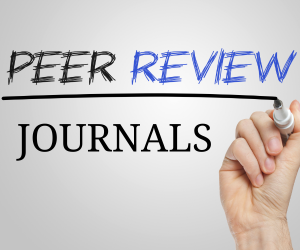MICROSCOPIC EXAMINATION IN PIEBALDISM: A COMPREHENSIVE LITERATURE REVIEW OF DIAGNOSTIC APPROACHES
DOI:
https://doi.org/10.61841/9c6arr47Keywords:
Piebaldism, microscopic examination, histopathology, melanocyte, pigmentary disorderAbstract
Background: Piebaldism is a rare autosomal dominant pigmentary disorder characterized by congenital absence of melanocytes, resulting in distinct hypopigmented areas on the skin and hair, notably the frontal scalp and anterior trunk.This comprehensive literature review aims to analyze the microscopic examination of piebaldism and evaluate various diagnostic approaches.
Methods: A comprehensive literature review was conducted through databases such as Google Scholar, PubMed, and ScienceDirect, focusing on histopathological features of piebaldism from 2014 to 2024.
Result: The review revealed significant histopathological differences between piebaldism and other hypopigmentary disorders. Piebaldism is characterized by the complete absence of melanocytes in hypopigmented areas, while hypermelanotic regions retain functionally abnormal melanocytes. Unlike vitiligo, piebaldism lacks inflammatory infiltrates, reinforcing its classification as a genetic disorder.
Conclusion: Understanding the unique microscopic characteristics of piebaldism is essential for accurate diagnosis and treatment. This knowledge facilitates the differentiation from other disorders, informing management strategies and contributing to improved outcomes for affected individuals. Further research into effective treatment modalities is warranted to enhance patient care.
References
Saleem MD. Biology of human melanocyte development, Piebaldism, and Waardenburg syndrome. Pediatr Dermatol. 2019;36(1):72-84. doi:10.1111/pde.13713
Hamadah I, Chisti M, Haider M, et al. A novel KIT mutation in a family with expanded syndrome of piebaldism. JAAD Case Rep. 2019;5(7):627-631. doi:10.1016/j.jdcr.2019.01.021
Jin R, Hong W, Ye Z, Fu L, Hu W, Xu A. Comparative outcomes of autologous cultured melanocytes transplantation and non-cultured epidermal cell suspension transplantation in piebaldism patients: A retrospective study. Skin Res Technol. 2024;30(1):e13580. doi:10.1111/srt.13580
Narayan V s., van den Bol L l. c., van Geel N, Bekkenk M w., Luiten R m., Wolkerstorfer A. Donor to recipient ratios in the surgical treatment of vitiligo and piebaldism: a systematic review. J Eur Acad Dermatol Venereol. 2021;35(5):1077-1086. doi:10.1111/jdv.17108
El Kouarty H, Dakhama BSB. [Piebaldism: a pigmentary anomaly to recognize: about a case and review of the literature]. Pan Afr Med J. 2016;25:155. doi:10.11604/pamj.2016.25.155.10499
Hattori M, Shimizu A, Ishida-Yamamoto A, Wakamatsu K, Ishikawa O. Melanocyte lineage cells in piebald skin. J Dermatol. 2019;46(9):816-818. doi:10.1111/1346-8138.14999
Hattori M, Ishikawa O, Oikawa D, et al. In-frame Val216-Ser217 deletion of KIT in mild piebaldism causes aberrant secretion and SCF response. J Dermatol Sci. 2018;91(1):35-42. doi:10.1016/j.jdermsci.2018.03.012
Sevilla A, Grichnik J. Therapeutic modulation of KIT ligand in melanocytic disorders with implications for mast cell diseases. Exp Dermatol. 2024;33(5):e15091. doi:10.1111/exd.15091
Funkhouser CH, Kinsler VA, Frieden IJ. Striking contiguous depigmentation across the lower limbs in piebaldism and its implications for understanding melanocytic migration and development. Pediatr Dermatol. 2019;36(4):511-513. doi:10.1111/pde.13831
Okamura K, Ohe R, Abe Y, et al. Immunohistopathological analysis of frizzled-4-positive immature melanocytes from hair follicles of patients with Rhododenol-induced leukoderma. J Dermatol Sci. 2015;80(2):156-158. doi:10.1016/j.jdermsci.2015.07.015
Pollard WL, Beachkofsky TM, Kobayashi TT. Novel R634W c-kit mutation identified in familial mastocytosis. Pediatr Dermatol. 2015;32(2):267-270. doi:10.1111/pde.12381
H K, Ju K, H Z, J S. Germline mutations of KIT in gastrointestinal stromal tumor (GIST) and mastocytosis. Cell Biosci. 2016;6. doi:10.1186/s13578-016-0120-8
Wen GD, Zhou C, Yu C, et al. A novel mutation of the KIT gene in a Chinese family with piebaldism. Chin Med J (Engl). 2013;126(12):2325-2328.
Gomes R. Piebaldism-Rare Genodermatosis: A Case Report and Concise Review of Literature. 2022;09:01-03. doi:10.15226/2378-1726/9/1/001149
Gofur NRP, Gofur ARP, Kahdina M, Putri HM. Vitiligo and Piebaldism, What’s the difference : A Review Article.
Zhang Y, Gao H, Zhang L, Zhao Y, Qiu C, Liu X. Novel Germline KIT Variants in Families With Severe Piebaldism: Case Series and Literature Review. J Clin Lab Anal. 2024;38(11-12):e25073. doi:10.1002/jcla.25073
Komen L, Vrijman C, Prinsen CAC, van der Veen JPW, Luiten RM, Wolkerstorfer A. Optimising size and depth of punch grafts in autologous transplantation of vitiligo and piebaldism: a randomised controlled trial. J Dermatol Treat. 2017;28(1):86-91. doi:10.1080/09546634.2016.1179251
Maderal AD, Kirsner RS. Use of Epidermal Grafting for Treatment of Depigmented Skin in Piebaldism. Dermatol Surg. 2017;43(1):159. doi:10.1097/DSS.0000000000000833
Downloads
Published
Issue
Section
License
Copyright (c) 2024 Lisda Yolanda, Muhammad Alkadri Anugrah, Novita Rahmawati (Author)

This work is licensed under a Creative Commons Attribution 4.0 International License.
Licensing
Ninety Nine Publication publishes articles under the Creative Commons Attribution 4.0 International License (CC BY 4.0). This licensing allows for any use of the work, provided the original author(s) and source are credited, thereby facilitating the free exchange and use of research for the advancement of knowledge.
Detailed Licensing Terms
Attribution (BY): Users must give appropriate credit, provide a link to the license, and indicate if changes were made. Users may do so in any reasonable manner, but not in any way that suggests the licensor endorses them or their use.
No Additional Restrictions: Users may not apply legal terms or technological measures that legally restrict others from doing anything the license permits.





